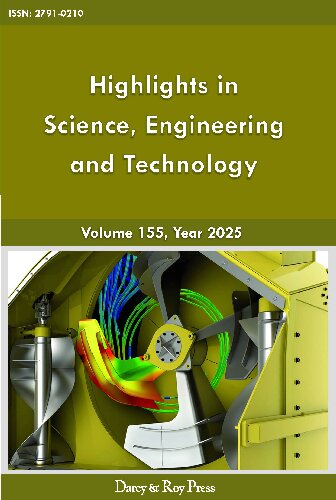3D Printing Technology and Its Development
DOI:
https://doi.org/10.54097/b6x9be36Keywords:
3D Printing Technology; Binder Jetting; Directed Energy Deposition; Power Bed Fusion.Abstract
In recent years, 3D printing technology has developed rapidly, with applications spanning traditional manufacturing, aerospace, and medical fields. Mainstream technologies include Binder Jetting, DED, and Power Bed Fusion. This paper discusses the principles, characteristics, and application cases of these three technologies. For example, Binder Jetting can be used to form silk powder combined with a binder, DED can achieve rapid manufacturing and repair of large metal components, and Power Bed Fusion can generate internal lattice structures that cannot be achieved with traditional processes. Additionally, the paper introduces applications of 3D printing in medical surgery planning, aerospace component lightweighting, and industrial material waste reduction. It highlights challenges such as quality stability, high certification costs, and insufficient material strength, emphasizing the trend toward transitioning from rapid prototyping to full-scale manufacturing technology. It concludes that as precision and material performance improve, 3D printing technology will leverage material innovation and process optimization to demonstrate breakthrough potential beyond traditional manufacturing across multiple fields, establishing a core position in high-end manufacturing and personalized applications.
Downloads
References
[1] Zhang J, Allardyce B J, Rajkhowa R, et al. 3D printing of silk powder by Binder Jetting technique. Additive Manufacturing, 2021, 38: 101820.
[2] Martina F, Williams S W, Colegrove P A, et al. Directed energy deposition of Ti-6Al-4V for defense applications. Welding in the World, 2017, 61(6): 1313-1325.
[3] Smith J, et al. Title of the Article. Journal of Materials Processing Technology, 2006.
[4] Abele E, Stoffregen H A, Kniepkamp M, et al. Selective laser melting for manufacturing of thin-walled porous elements. CIRP Annals, 2015, 64(1): 361-364.
[5] University of Minnesota, College of Science and Engineering. Researchers' 3D print lifelike artificial organ models [College News].
[6] Hasan O H, Atif M, Jessar M, et al. Application of 3D printing in orthopedic surgery. A new affordable horizon for cost-conscious care. The Journal of the Pakistan Medical Association, 2019, 69(Suppl.1): S46-S50.
[7] Thompson S M, Bian L, Shamsaei N, et al. Additive manufacturing of aerospace components. CIRP Annals, 2016, 65(1): 1-4.
[8] DebRoy T, Wei H L, Zuback J S, et al. Metal additive manufacturing in aerospace: A review. Materials Today, 2021, 47: 36-51.
[9] Ford S, Despeisse M. Additive manufacturing and sustainability: Opportunities and challenges. Journal of Cleaner Production, 2016, 137: 1573-1587.
[10] Petrovic V, Vicente Haro Gonzalez J, Jordá Ferrando O, et al. Industrial applications of additive manufacturing: A case study approach. International Journal of Production Research, 2011, 49(12): 3371-3390.
Downloads
Published
Issue
Section
License
Copyright (c) 2025 Highlights in Science, Engineering and Technology

This work is licensed under a Creative Commons Attribution-NonCommercial 4.0 International License.


















